
Watershed-Wide Planning
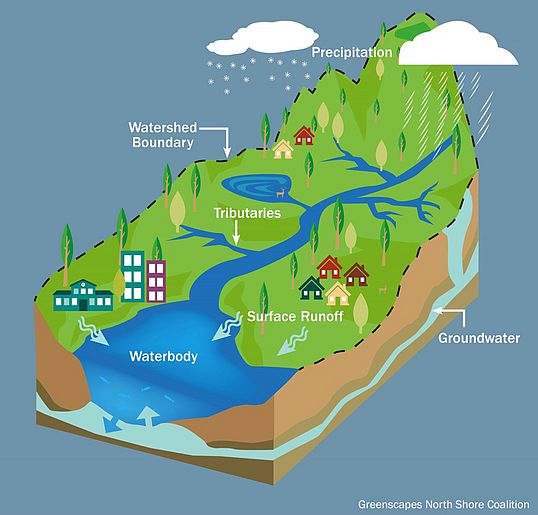
What is watershed management planning?
A watershed is all the land that drains into a common body of water. In the Newfound Watershed, this means all the land that drains into Newfound Lake–a total of 56,707 acres. Everything that happens on the land within the Newfound Watershed impacts the water we use for drinking, recreation, and enjoyment.
Watershed management planning is a proactive, science-based approach to protecting water quality by understanding and addressing the many factors that affect water quality–from stormwater pollution and development to forestry, agriculture, and recreation. These plans are community-driven and provide a roadmap to work together to maintain water quality, protect ecosystems, and ensure clean water for people and wildlife. They identify pollution sources and provide action items to address pollution and other threats to water quality.
The Newfound Watershed Management Plan
In 2009 the Newfound Lake Region Association partnered with stakeholders, local and state organizations, and environmental experts to create the Newfound Watershed Management Plan. It was shaped through an inclusive, collaborative process that included:
- Stakeholder engagement through public meetings, surveys, and interviews.
- Scientific assessment of water quality, land use, pollution sources, and more.
- Modeling and projections to demonstrate how different types of conservation action may impact the future health of the watershed.
The plan ultimately sets strategies to
- Create sound land use plans in each watershed community that achieve the vision of the community and the watershed.
- Prevent phosphorus and other pollutants from reaching surface waters through local land use regulations and BMPs
- Guide development away from riparian buffers, wetlands, steep slopes, and other critical resources.
- Pursue conservation opportunities to protect the ecological health and natural beauty of the Watershed.
- Foster a sense of stewardship by providing education opportunities for students, land owners, and visitors.
This process was supported by funding from the New Hampshire Department of Environmental Services and the U.S. Environmental Protection Agency through a Clean Water Act Section 319 grant.
Current Projects
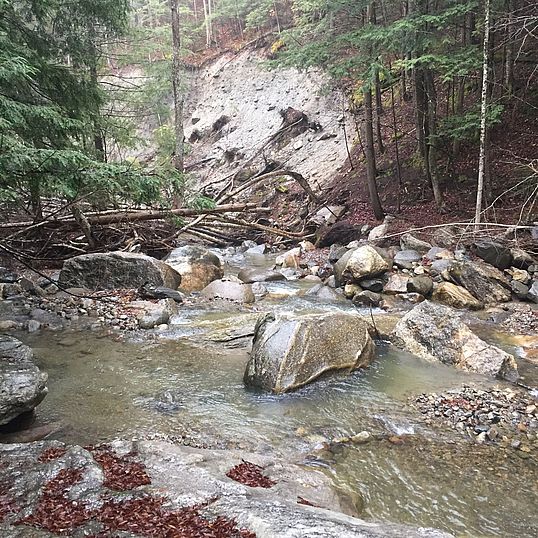
Atwell Brook (Groton)
During a 5+ inch rainstorm in July 2019, Atwell Brook jumped its bank and began eroding a steep slope. There was flooding downstream in the Cockermouth River. The washout in Atwell Brook caused sediment to flow into Newfound Lake, causing water quality to be impacted for months.
The brook continues to erode sediment from the hillside even during minor rain events, causing stormwater pollution downstream. NLRA is working on plans to set the brook back into the old channel to stop the cycle of streambank erosion.
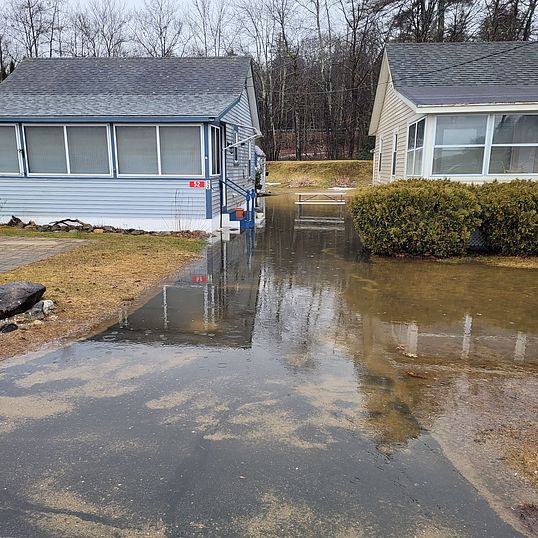
Shore Drive (Bristol)
Identified as "site 19" in the 2014 watershed servey, Shore Drive became an emerging issue during the rain 2023 season. While the issue cited in the watershed survey remains an issue, the enitre neighborhood experiences regular flooding, including inundation of septic systems. This is a complex issue involving private landowners, including the Diocese of Manchester, the Town of Bristol, and NH DOT. All parties are interested in addressing the problem, which is one of stormwater flow and drainage. We need engineering support to devise a solution.
We are working with 319 funds to develop conceptual plans to manage the stormwater and flooding at this site to prevent nutrients and sediment from entering Newfound Lake.
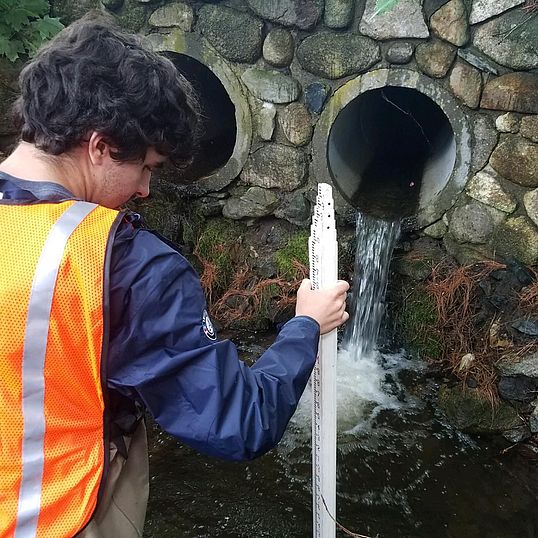
Town Culverts (Hebron)
Stream crossings like culverts can contribute significant pollution to Newfound Lake and watershed. In partnership with the Town of Hebron, we identified culverts on town roads that are contributing pollution to the lake and threatening town infrastructure. In the spring of 2025, Hebron replaced three culverts in the watershed.

Town Planning Board Partnerships
Along with a planning consultant, NLRA works with planning boards in watershed towns to develop local land use regulations that both help to protect water quality and meet each town's unique town planning goals. NLRA has model ordinances available for town boards and residents that can support implementation of lake-friendly regulations. View them here.
Bristol
Identified steep slopes and made regulations that limited some development on steep slopes. Steep slopes are more vulnerable to intense storms, and limiting development on steep slopes protects water quality
Hebron
Identified and mapped stream crossings on town roads to locate vulnerable infrastructure and crossings that contribute higher levels of nutrient and sediment pollution.
Groton
Supported an understanding of the interaction between floodplains, aquifers, and steep slopes, with the aim of developing regulations that protect water quality, preventing runoff and sediment loading.
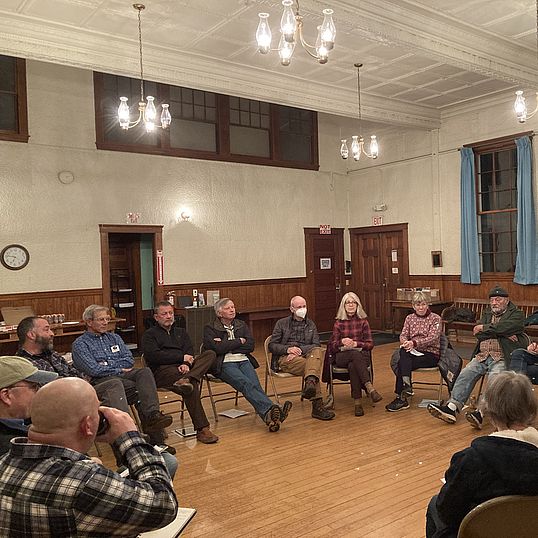
Watershed Workshop
NLRA's annual Watershed Workshop is designed to help town planning boards, select boards, conservation commissions, zoning boards, and road agents connect with each other and with resources NLRA has to offer. In the first three watershed workshops topics have included watershed-wide planning efforts, septic regulations, and steep slope regulations.
Impact Summary
Since it's adoption, the Newfound Watershed Management Plan has guided a range of impactful conservation efforts:
- Enhanced water quality monitoring
- Pollution reduction from small and large scale stormwater projects
- Permanent land protections
- Lake-friendly regulations
- Education and outreach
Watershed Management Plan Technical Reports
There have been five phases of the Newfound Watershed Management Plan, starting with the creation of the plan itself, and four subsequent implementation phases. Technical reports for each phase are below
2009 Watershed Management Plan: Every Acre Counts
2012 Newfound Lake Watershed Management Plan Implementation Phase I
2014 Newfound Lake Watershed Management Plan Implementation Phase II
2019 Newfound Lake Watershed Management Plan Implementation Phase III: Watershed BMPs and Stewardship Capacity
2021 Newfound Lake Watershed Management Plan Implementation Phase IV: Culverts, Structural BMPs and Non-Structural BMPs
- Complete June 2025
Resources
The original 2009 Watershed Management Plan was built on a wealth of data and information about the Newfound Watershed. Follow the links below to access these informational resources.